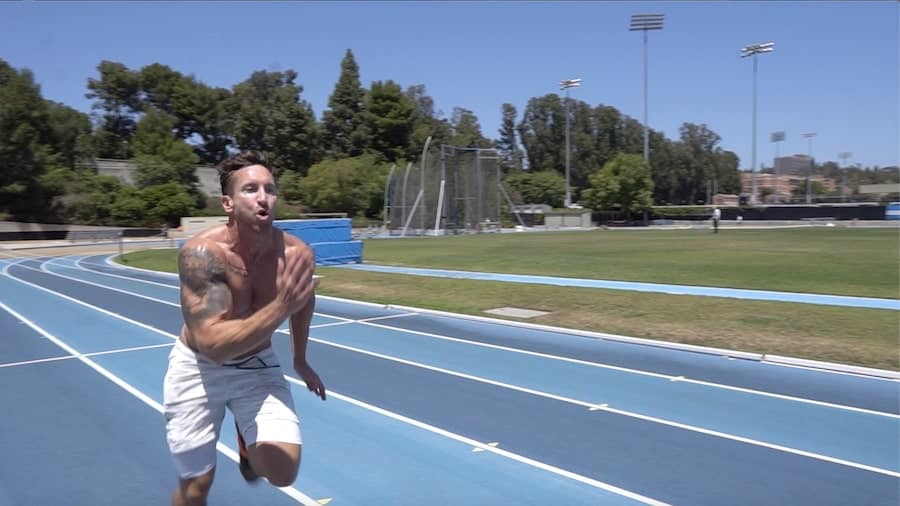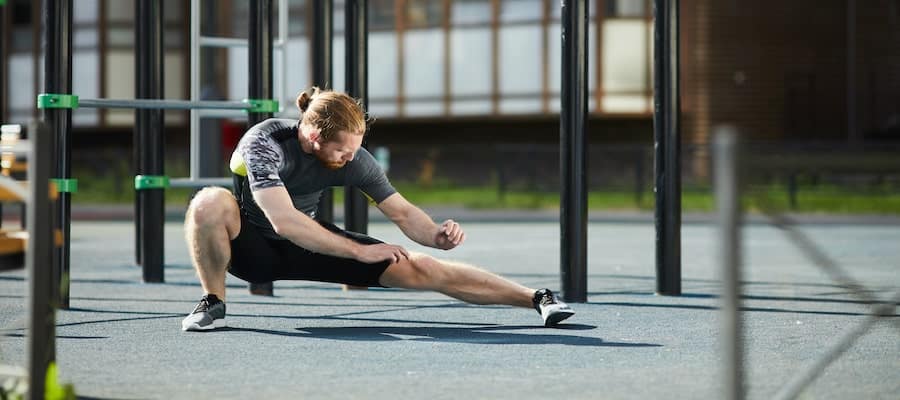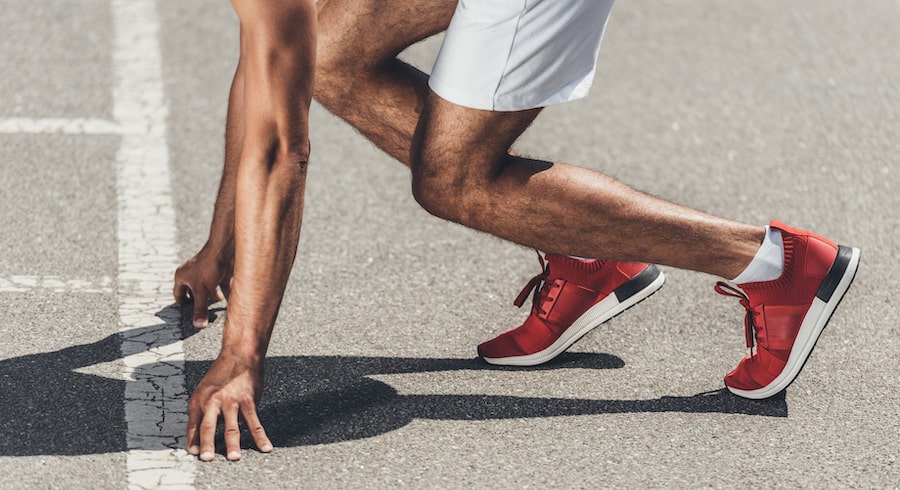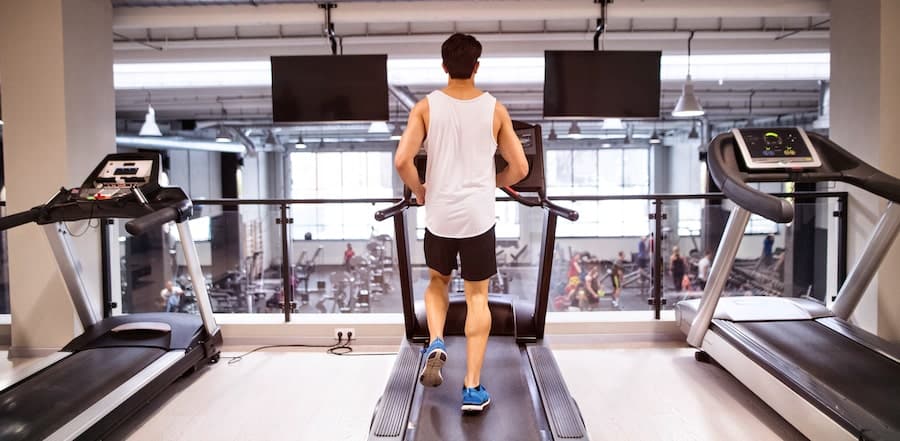Want to get shredded without revamping your entire workout plan? Add HIIT sprints to your pre-existing routine for a shredded and lean physique. The world's leanest creatures are all sprinters, from cheetahs to stallions. They are all sprinting animals with explosive sprints and shredded bodies.
Sprint For A Six Pack

Logically, you would work abs and obliques for a rack of abs, but what if someone told you that your abs are unlocked with high-intensity interval training? HIIT sprints are one of the fastest ways of burning fat and shredding because they continue to burn fat for ages after your workout. Cardio might not be your favorite part of the workout but it is necessary for quick results.
Sprinting uses fast-twitch muscle fibers, which help cut the fat and lean your body out for a sculpted and defined physique. If you compare sprinters and marathon runners, you will quickly notice the subtle differences. High-intensity interval training is the best option for anyone that does not want to spend hours a day doing cardio and wants results fast!
Three-Steps to Getting Shredded
Just like you would never bake without a recipe, there is also a recipe to perfect HIIT workouts. This is the tried and tested way to get the best out of your sprints, as well as improving recovery time and reducing the risk of injury.
The best part of this workout is you only need 20 minutes twice a week to jumpstart fat loss.
STEP 1: DYNAMIC STRETCHING

You need to stretch; it is almost non-negotiable. Stretching will fire your fast-twitch muscles up and help you finish your sprints without injury. If you are doing HIIT sprints, schedule them around days where you will not be recovering.

Stretching to shred:
STEP 2: 85% SPRINT CAPACITY

The aim of this step is 3 sprints at 85% of your maximum speed. This is your second warm-up; your sprints should last between 10 and 20 seconds, depending on your fitness levels. These are almost like a build-up to your fast sprints. They get the fast-twitch fibers on fire.
Once you have completed one sprint at 85% capacity, rest for 60 seconds, grab a sip of water. Jump straight into your next sprint. Once you have completed all three sets of moderate-intensity, get ready for max capacity.
STEP 3: MAX CAPACITY, HIGH INTENSITY - 95%

This is the third and final stage. Your recovery periods between sprints are important. During this stage, you need to sprint at maximum capacity. If you are advanced in your fitness training, run at 100% capacity, as if your life depended on it. For beginners sprinting at 95% capacity is perfectly fine.
Sprint for 10 - 20 seconds or 50 - 60 yards. Rest for 90 seconds between sprints. Your rest periods can consist of active rest where you lightly move your body to keep your muscles active.
You should aim to get through 4 - 8 sets of intense sprints with a rest in between.
The Right Number of Times Per Week to Train

There is no such thing as too much of a good thing. Well, truth be told, this is one of those workouts that is highly effective and doesn't work in the same way that traditional cardio does. Any cardio lover will tell you they spend hours running.
These HIIT workouts are efficient at shredding fat in two sessions a week. A total of 20 minutes twice a week is the perfect amount of time for the best results. Overdoing it is risky and can cause injury.
From Beginner to Advanced
As with any other muscle-building workout, there is a certain amount of progress that needs to be made in order to get results. Try sticking to this plan for a total of 8 weeks and gradually increasing the intensity. Here is a suggested way to split your plan up:
WEEKS ONE TO TWO
This is the starting phase where you discover your strength. Aim to do at least one HIIT sprint workout per week. Your workouts should consist of 6 sprints in total, 3 at 85% and 3 at 95% capacity. Each sprint should be about 10-15 seconds long with a 54 - 60 second rest in between.
WEEKS THREE TO EIGHT
Crank it up a notch and go for 2 HIIT workouts per week. This time you up to your sprints to a total of 8 - 10 sprints of 15 - 20 seconds each. Keep your rest period at 45 - 60 seconds between each sprint.
At this point, you will feel the burn and the fatigue.
The plan is to take your current fitness level and push it to the max; a HIIT workout is excellent at accelerating fat burn while enhancing muscle building. You need to warm up for these sessions, or else you will suffer from stiff muscles and fatigue.
The Benefits of HIIT Sprints

Visceral fat obliteration is absolutely the objective of any interval training workout. There are several benefits to sprints, which include:
A side note on building muscle and HIIT
Many lifters shy away from cardio as it can inhibit muscle gains; while that is true to some extent, it is also about how you incorporate the two. Try separating the two training sessions. Add a cardio session on a day you are not lifting weights.
An alternative includes doing HIIT sprints as part of your routine in the mornings and weights in the afternoons or evenings. Try not to do cardio right before your lifting session. HIIT will help increase vascularity - blood flow - for better pumps and all-important muscle gains.
The Shredding Diet
It is only fair to say that shredding is not just about exercising alone; it consists of a well-planned diet as well. If you haven't already, calculate your macros and your base metabolic rate. This will tell you exactly how many calories you should be consuming and how to consume them for optimal results during your shredding period.
Suppose you are overweight, consult a personal trainer, diet coach, or nutritionist for the best plan to get your weight down in a healthy timeframe to avoid doing damage to your body. Combining a well-planned diet and HIIT sprints can partner up as one of the best combinations to help anyone lose additional fat.
HIIT is perfect for overweight individuals because it allows them to gradually build up and improve their overall fitness and cardiovascular health.
High-Intensity vs. Traditional Cardio

High-intensity interval training and cardio are both excellent forms of cardio. Both forms are great for heart health and weight loss. There is no doubt that these two forms of training burn calories and fat. With little to no equipment needed, these are the cornerstone of simplicity. With that said, which is the better option?
Traditional cardio, such as marathon running and straight running on a treadmill, are simple exercises that don't require much professional instruction and are excellent for beginners. The idea is that you perform at moderate intensity for 20 minutes or more; your heart rate should be between 120 - 150 beats per minute. They are manageable exercises.
HIIT works a little differently. It pushes you to work out as hard as you can at maximum capacity for a short period of time; you lower the intensity down again. After the defined time, you aim to increase capacity again. Think of it like a roller coaster. You peak and lower down to an active 'rest' before shooting up again and taking off. You breathe harder and burn even more fat than with traditional cardio.
HIIT is the perfect shredding companion to any of your usual workout routines. For anyone that wants to build muscle, maintain that build while burning off excess fat, HIIT is the way to go. You need shorter periods of time going through a HIIT workout than you would if you just stuck to traditional cardio.
Just 20 Minutes?
You will be tired. Your body will feel sore and achy. This is perfectly normal for the first few times you add sprints to your weekly routine. You do not need to overdo it, as your body might not be able to cope properly with the recovery. Make sure you listen to its cues and know when to stop.
If your goal is to lose weight, 2 training sessions a week between your weight training sets is ideal. This is a great way to lose weight over a healthy period of time without overdoing it. Your body will take a lot of strain the first few times, so make sure you recover properly and get the foam roller out for those stiff muscles.
Once your fitness levels have increased, you can add in an additional sprint session for your training's remaining duration.
Proper Form & Intensity
Fast-twitch muscle fiber training at its finest consists of 5 - 10 sprint intervals at maximum capacity. These are more than enough to begin stripping fat off your muscles and cutting your physique; you will be lean in no time.
For beginners, it is highly recommended to start with 5 sprints and rest for 75 seconds between sprints. Your sprints should be about 100 yards or 15 seconds in total.
Keeping your arms at a 45-degree angle is key to getting a good sprint. They should pump forward alongside your body, not across it.
If you are not an experienced sprinter, keep your sprints to a 90-95% capacity.
Warming up is key to maintaining proper form at all times. Without the warm-up, you risk injury, which might put you out of action for longer than needed.
Location, Location, Location

Whether you're a gym junkie or an outdoor training machine, you can do sprints anywhere. If you are unsure how to get these done in a gym setting, head to a personal trainer and discuss the equipment with them. They will be able to help set up the treadmill for you.
If you are an advanced trainer, you will be able to figure it out on your own. These sprints are great for park-based workouts, football fields, and the track. They can also be perfected on indoor tracks. You don't need equipment at all, which is what makes this an invaluable tool for shredding fat. You don't need to drive to the gym to get your training session on a day that you would normally not train on.
Alternative HIIT Workouts
What about snow and rain? Surely no one sprints in the rain. Well, indoor tracks are perfect for this. There are two other options that you can explore to get the best out of your HIIT training, even when it is raining. Try these alternatives if you want to do something a little different or if you don’t want to miss a training day when it is dreary outside.
HIIT BIKE
Grab the stationary bike or the spin bike and get your feet on those pedals. The beauty of a bike exercise is that it doesn't always feel like you are working out. With the right music and a properly developed plan, they can actually be quite fun. Try this HIIT workout for ultimate fat burning.
- 1Warm-up with a light pedal at medium resistance for 4 minutes.
- 2Begin pedalling at high resistance for 15 seconds at maximum capacity.
- 3Pedal at low resistance for 1 minute. This is the recovery phase.
- 4Pedal at maximum capacity for 15 seconds. Repeat this cycle for 4 rounds.
- 5At the 10 minute mark, pedal at maximum capacity and high speed for 20 - 25 seconds. You should be exhausted at the 20-second mark.
- 6Slow down to pedal a recovery of 1 minute. Repeat this for 6 cycles.
- 7At the 20 minute mark, begin the cooldown! Gradually decreasing the resistance as you cool down, the last two minutes should consist of pedalling at the lowest resistance. Try not to accelerate or go too hard at this phase as it is a cooldown.
HIIT SPRINTS ON THE TREADMILL

Treadmills are made for anaerobic action. These machines are built to help you track speed and train for endurance. Depending on the programming, there are a bunch of options for ultimate interval training. With a little planning, you can set them up for sprints in no time. Try these workouts for the ultimate HIIT workout indoors.
HIIT IN 30
- 15-minute warm-up: Try to do a few dynamic stretching and warm up drills such as high knees, hip openers, and bodyweight squats. Begin an easy jog for the remainder of the 5 minutes.
- 2Begin running at 80% capacity for 30-seconds.
- 3Slow down to a 30-second walk at 20% effort.
- 4Repeat this cycle for ten rounds of each section.
- 5Begin a 2 minute jog at a 40 - 50% capacity; it should be conversational. This is the recovery phase.
- 6Repeat the 30 seconds run/30 seconds walk cycle for 10 more rounds.
- 7Once you have completed all 10 rounds, begin a full 3 minute cooldown, slowly decrease your capacity to a walking pace. You should walk for at least 2 minutes.
- 8The cooldown is crucial.
- 9Stretch and foam roll your muscles to prevent any additional stiffness and sore muscles.
THE TREADMILL SPRINT
- 1Warm-up for 5- to 10 minutes: Walking or jogging at a comfortable and conversational pace.
- 2Begin the 15-second sprint: Sprint at maximum capacity —your heart rate should reach 85% to 90% of your max. At the 15 second mark, you shouldn't be able to maintain it for much longer.
- 3Recovery: 1 to 2 minutes of slow to moderate walking or jogging until your heart rate returns to a recovery state which should be between 120 to 130 beats per minute.
- 4This completes a cycle. Repeat the cycles for as many sprints as you can in 20 - 30 minutes.
- 5Your recovery is important for you to get the right amount of oxygen back into your body.
- 65-minute cooldown: Walk or jog at a comfortable pace, gradually slowing down. You need recovery and a cool down.
- 7Roll out with a foam roller and some dynamic stretches.
- 8If you are not able to sprint at 90% capacity, keep it slightly lower towards the 80% mark. Train at that capacity for a week or two and then increase to 90 - 95% capacity. Within 4 weeks from the start of your training, you should be able to train at 100% capacity for the session.
The Takeaway
Whether you are looking for the best way to get shredded or lose excess visceral fat, there is no doubt that HIIT sprints are the way to go. They are designed with adaptation in mind and work for anyone of any fitness level.
You don't need equipment, nor do you need anything else other than dedication. From young people to middle-aged ones, HIIT sprints should be part of everyone's weekly routine. This is especially true for maintenance and bulking phases if you are a builder. When your cardiovascular health is in top shape, it benefits your other training too.






